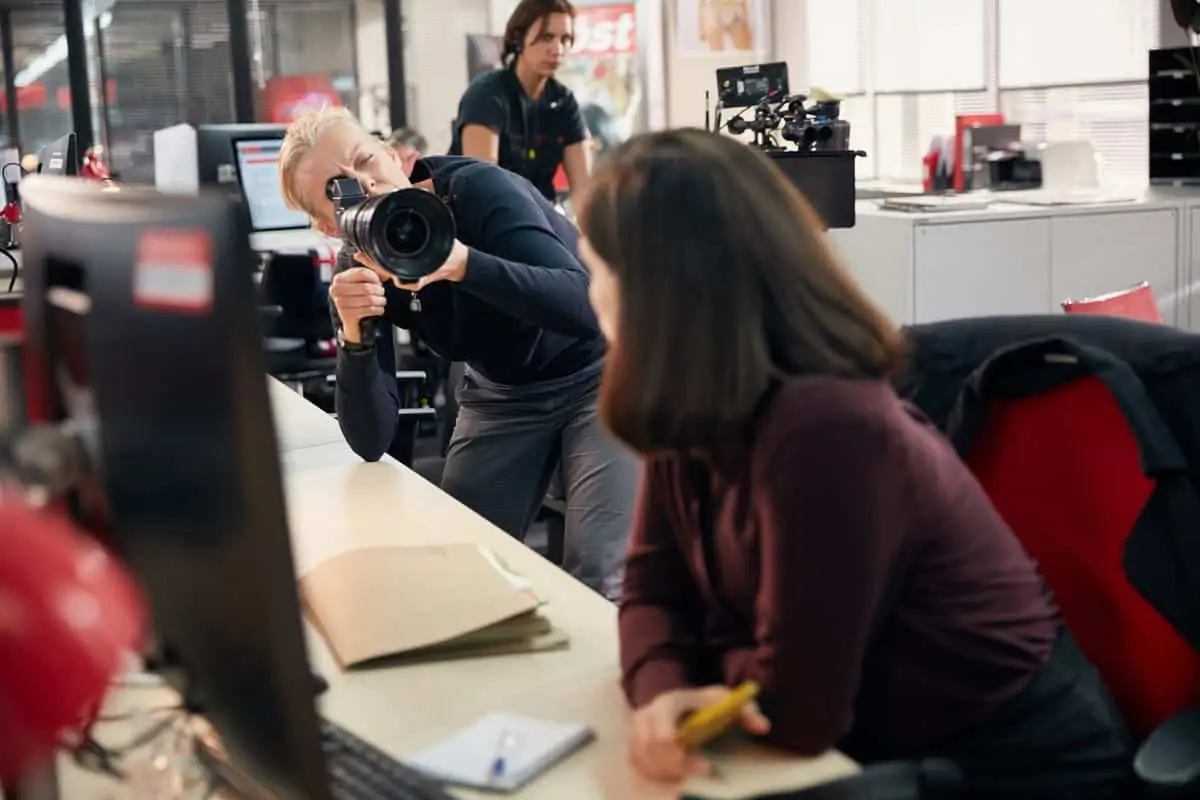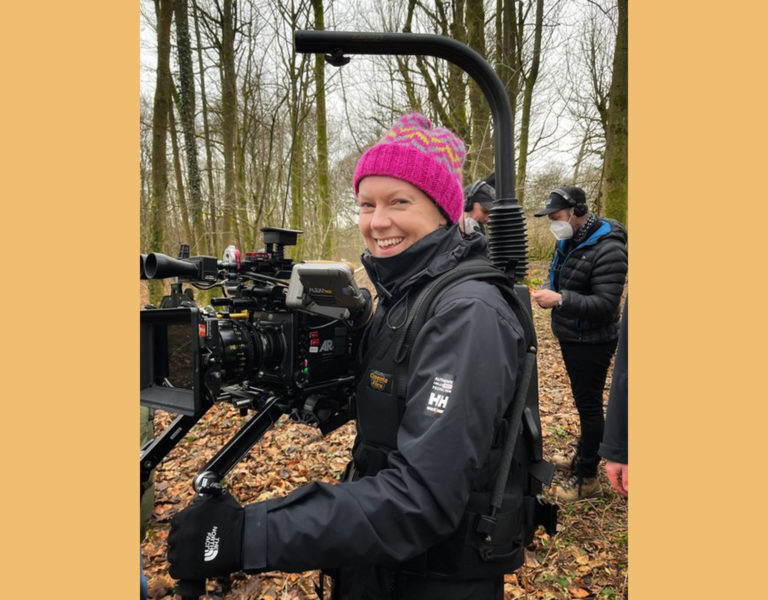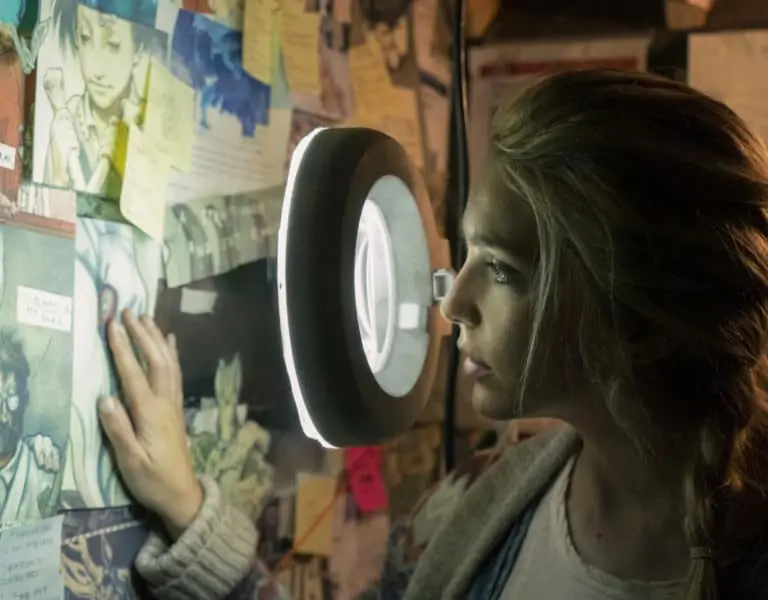MATERNAL INSTINCT
Kate Reid BSC stays flexible when lensing HBO’s limited series The Baby.
“When I finished reading the pilot script of The Baby, I didn’t really know what to make of it,” says cinematographer Kate Reid BSC. “And that’s always really exciting, getting sent material that surprises you.”
The eight-episode HBO limited series, which began airing on 24 April, is a horror/comedy from first-time showrunners and co-creators Siân Robins-Grace and Lucy Gaymer. A co-production with SKY and the creatives at SISTER Productions (who produced the award-winning Chernobyl), The Baby is as funny as it is deathly serious.
Starring new-to-TV-acting comedian and presenter Michelle De Swarte as 38-year-old Natasha, the story is a raw examination of motherhood from the perspective of a woman who doesn’t want to be one. As she watches her closest friends break away and start having babies, she’s determined to not follow the same chosen paths. Until, unexpectedly, a baby quite literally falls into her lap (arms) and her life dramatically erodes into figuring out how to mother someone when being a mother was never something she wanted to do.
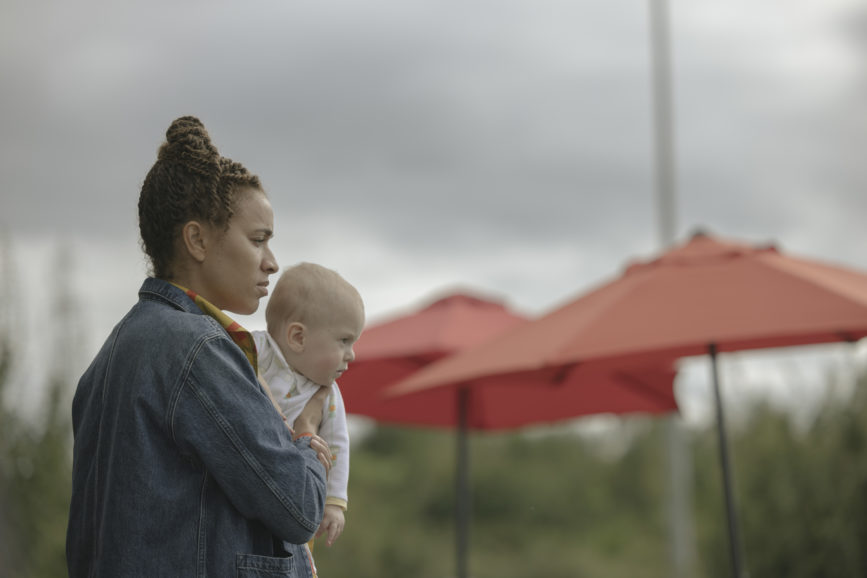
Reid—known for her recent TV work on BBC’s Press, HBO Max’s The Nevers, and Prime Video’s Hanna—set the look for The Baby, working in tandem with pilot director Nicole Kassell to do so. Reid filmed the first three episodes, (Stacey Gregg directed episodes two and three) and then handed the cameras to Ben Wheeler for episodes four, five and six, and Diana Olifirova for seven and eight.
“The tone was the hardest thing to land,” says Reid, thinking back to pre-production in spring 2021. “I asked to read the second episode before meeting for the show, because I needed to get a bigger sense of where the story goes. But that opening sequence, it was actually really easy to imagine the look for it.”
Reid is referring to a distressing nighttime scene where a young woman runs through a forest with a baby in her arms—only the audience doesn’t know it’s a baby until she reaches a clearing in the wood where a cliff to the sea below is only a few paces away. She places a bag down on the wet grass, glistening in the moonlight, and unzips to reveal an adorable baby face. But we’ll come back to this moment in just a bit—a real cliffhanger. (Pun intended.)
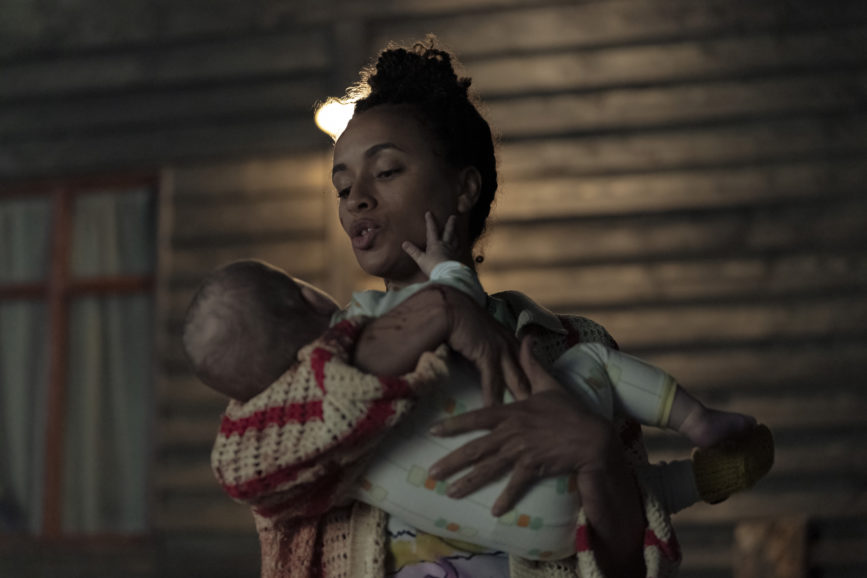
Kassell and Reid’s collaboration in pre-production was extremely detailed. Reid credits the veteran TV director’s strong vision—known for her work on HBO’s The Leftovers, Watchmen, and The Killing—of the creators’ story with helping to create a visual narrative that would be easy to build on for the following DPs. The duo aimed to give a humorous element to The Baby’s framing and Breaking Bad was an oft-used reference. In terms of overall feel, Coen Bros. films were also a source of inspiration. But Reid was also keen on finding the frames that have both the scale and the cinematic visuals that suits dramas so well.
“Quite often,” she explains, “we were going wider on the lens and closer to characters’ faces, using all of the frame get those details in there that add the layers which are part of the story.”
Kassell also wanted to give a feeling of being unsettled and have that play out in the visuals. Slightly destabilising images were key for the audience to be emotionally affected as intended by the narrative itself, whether that was through negative framing or isolating characters within spaces, especially Natasha.
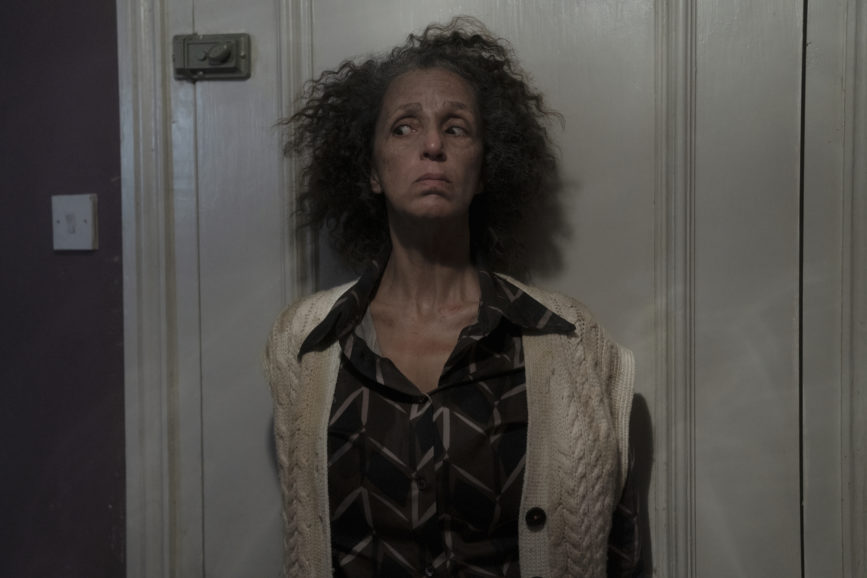
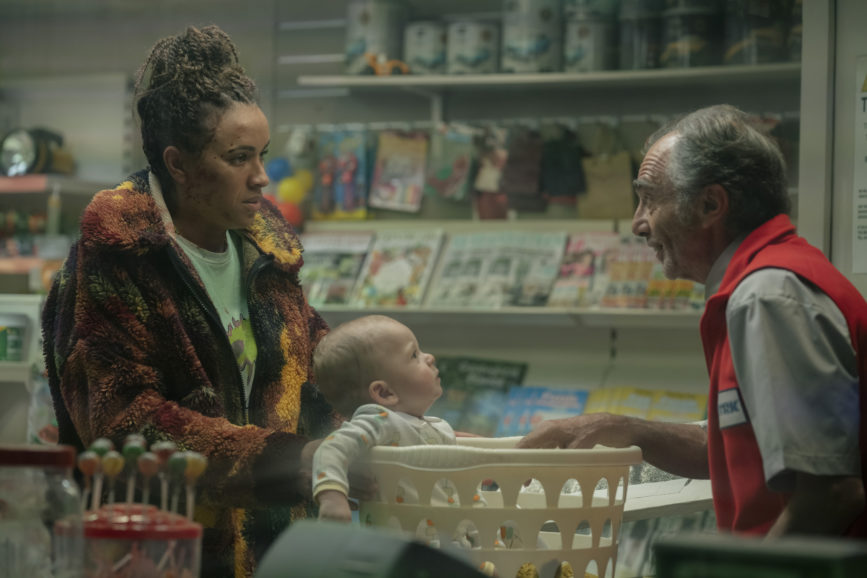
“We meet Natasha as she alienates her friends and is questioning the life choices that have brought her to this point,” says Reid, “so trying to convey some of this isolation and discomfort was important in the framing in the pilot. But from the arrival of the baby onwards, her world begins to fall apart around her, so a lot of the framing becomes about her relationship to the baby in the frame and whether it’s a comedic moment or something more sinister.”
Adding a third element to the mix, Reid and Kassel wanted to maintain a bit of realism as well, so that the darker tone of the story could come through too and could be unencumbered by humorous or unsettling moments. “[For instance], I used colour in a way that was motivated even if it was slightly augmented and kind of embellished or heightened,” says Reid, “but still felt like the audience wouldn’t question it, necessarily.”
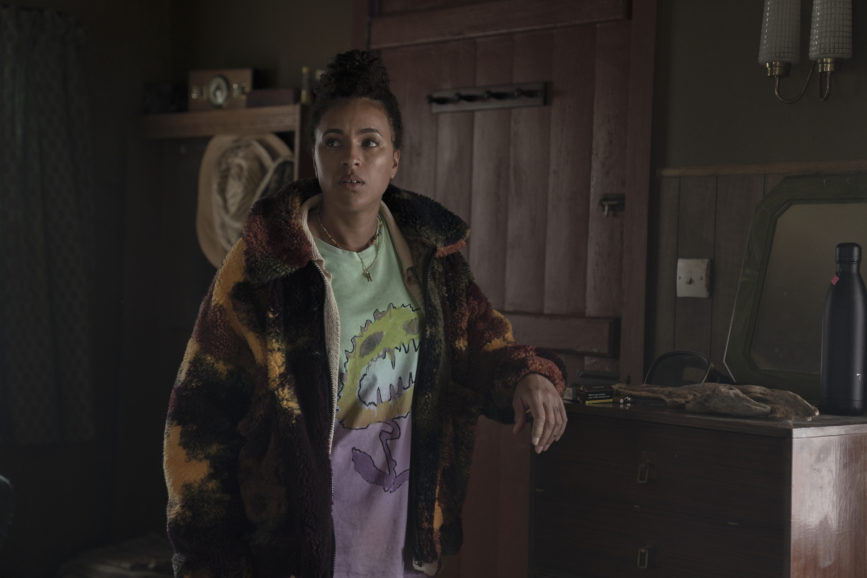
Reid tested the ARRI Alexa Mini LF and the Sony Venice cameras, ultimately landing on the Venice, shooting at 6K with an aspect ratio of 2:1 and an extended set of Canon K35 lenses from One Stop Films, which supplied the camera and grip package for the series.
“I wanted to use a large format sensor so I could enjoy wider lenses without distortion and play with the shallower depth of field this allows on wider focal lengths,” Reid explains. “I wanted the characters’ faces to be able to pop to add to the slightly unreal feeling.”
The extended lens set includes rehoused Canon FDs. In the end, the hero focal range for Reid’s episodes were between 35mm and 55mm which was actually longer than Reid had anticipated.
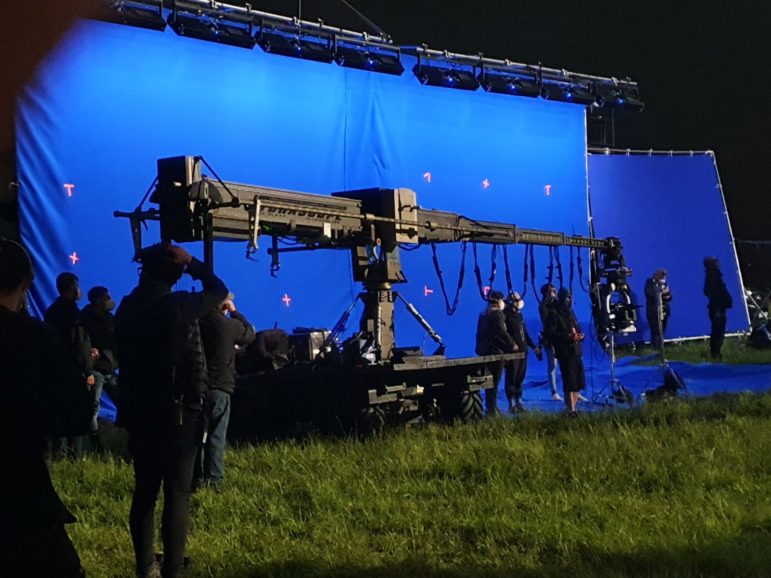
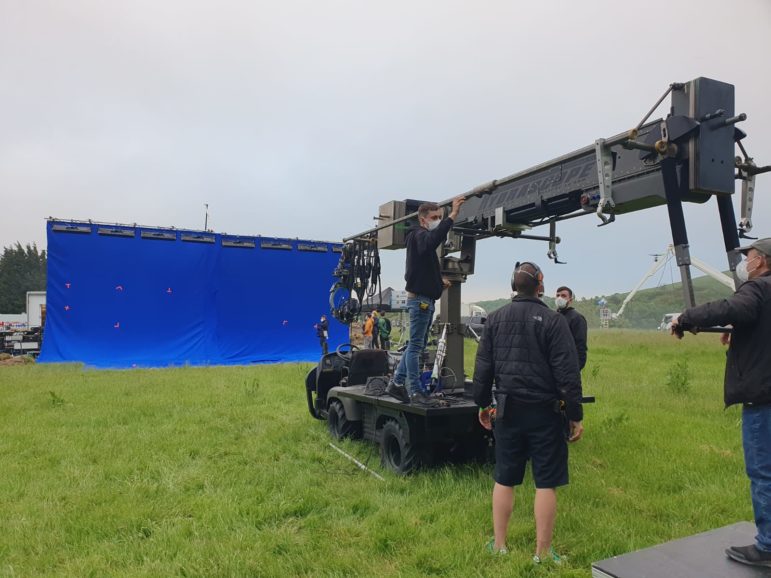
She explains: “[The extended set] meant that I had a really nice spread of lenses with focal lengths that go wider than a 24mm which is where you would get cut-ins if you were using K35s on a large format,” she says. “I tested a lot of different lenses, but I love these—they’re fast, which again helps when you’ve got a lot of night work, they’ve got a beautiful quality to them, and they’re quite soft, something I generally lean towards. I also used a subtle level of SFX diffusion across the episodes.”
But Reid’s choice for camera really came down to a few facts: she wanted to shoot larger format to create a slightly exaggerated and heightened aspect to the visual narrative, and she needed that 2500 ISO because nearly the whole pilot episode takes place at night. She also wanted to consider the DPs coming after her and knew that further into the episodes there were quite a few more night scenes.
“It would have been selfish to make a choice that would have worked for me [only],” she says. “[I always try] to think of the implications for later down the line. It’s really important if you’re setting up a pilot that you’re making decisions that are sustainable across the whole series and not just for your episodes.”
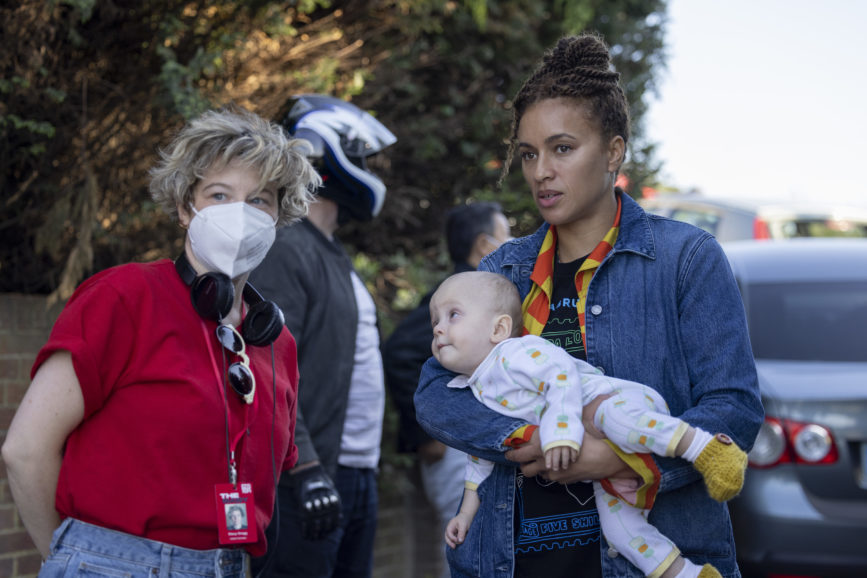
But back to that cliff(hanger), finally—it was what drew Reid into the world of this horror/comedy so quickly and easily.
“You’re watching this lady running frantic through the forest and there’s that light from the torch and you can hear heavy breathing and you think, ‘Oh, we’ve seen as before; here we are in the woods,’” says Reid. “Then she gets to the cliff and there are these two bumbling, inadequate policemen and it’s an instant shift in tone.”
And though it was one of Reid’s favorite scenes, it was also one of the more challenging to shoot because it involved VFX sequences with CGI needed to bring together disparate locations and worlds. Initially, our supervising location manager E J Richards was looking at coastal spots for possible places to set the beach hut that Natasha stays in when the baby falls out of the sky and into her arms after a woman falls to her death on the rocky shore in front of her. And they were also scouting actual cliff edges.
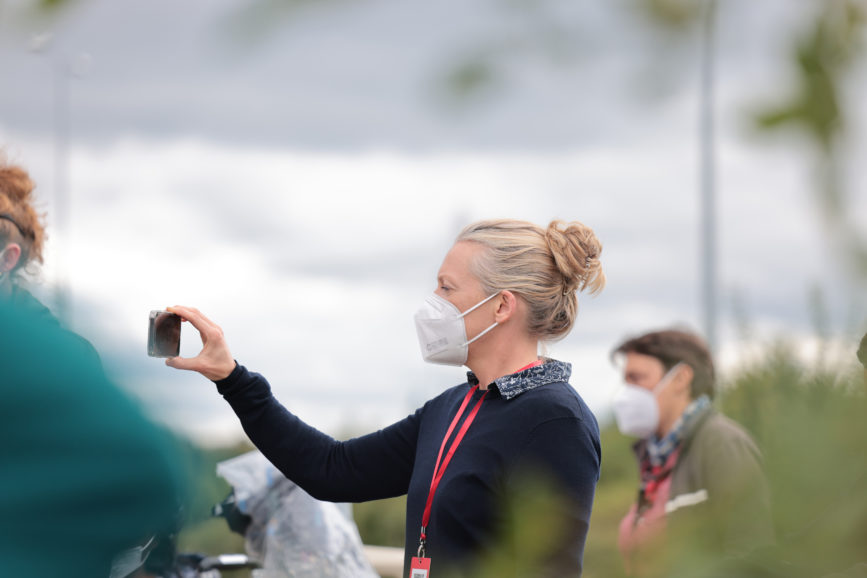
“When you’re standing on the edge of a cliff at dusk or after the sun sets as I’d done on one recce,” says Reid, “[you realise] there’s no point in bringing a unit up there—it’s limited access it was not going to be safe to put anyone anywhere near the edge of a cliff, it would be expensive and difficult set up to light.”
Also, it was proving impossible to find a location that provided the juxtaposition in the scene of the forest where the woman comes running out and into a clearing that then opens to a cliff face to a small beach below.
Adds Reid: “What I really needed was a forest that I could access on one side to be able to light quite easily, which could open up to a big open field, that would lend itself well to blue screen that would be cheated for our cliff and allow for the continuous action from the woods to the cliff.”
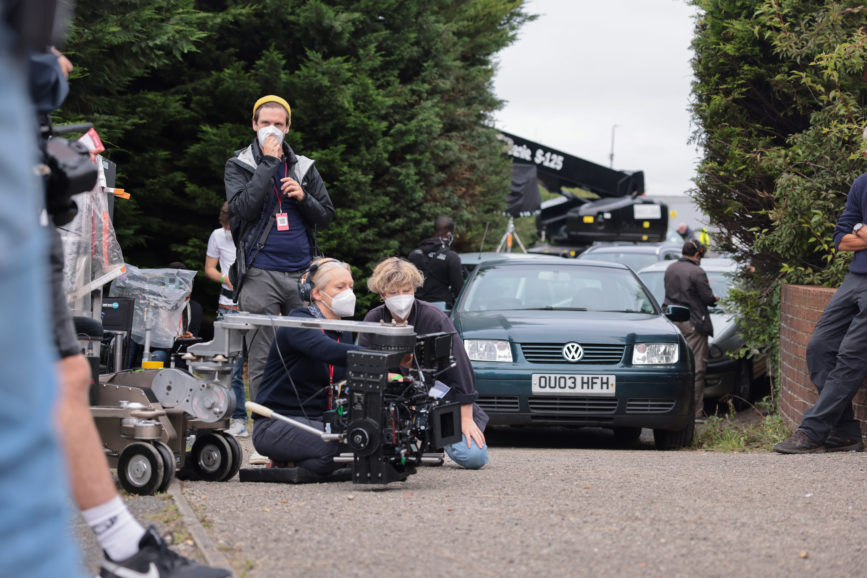
In the end, they found a suitable space near Newhaven, and had a 20×40 blue screen dug into the ground a half metre so they could create the effect of the cliff edge for the low angel shots which would also conceal the lighting for blue screen. Reid also praises gaffer Carolina Schmitholstein and her team during this process and for their work on the series.
For the running sequence in the woods, they used an electric bike with remote head as the tracking vehicle, mixed with some energetic handheld by the series camera operator Doug Walshe. To film all the wide shots involving the cliff, done against the blue screen with the real forest in the other direction, they primarily worked off a Chapman Leonard Hydrascope 44 with Libra head, key gripped by James Powell. All the baby shots and close-up work on the actor in this scene, were re-created in the studio on a 20 x 20 grassy platform, that was slightly raised so they could get the necessary angles and light to match the exterior night work. This helped ease the nighttime hours needed as the pilot was shot mid-summer with the bonus that its later placement in the schedule meant one of the hero babies had learnt to crawl by then. A vital plot point, indeed.
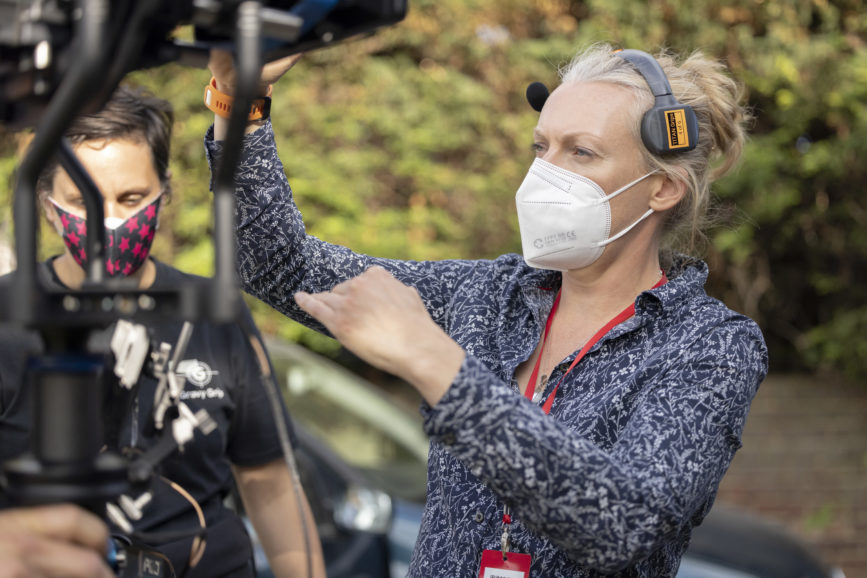
For the beach cottage below, the production considered building on an actual beach, but again, came back to the serviceability, accessibility, and safety issues. And driving around South Downs area, there were quite a few quarries, so they considered having the art department build one on stage that they could then fake in as the cliffs behind the house. But again, Reid tips her hat to the locations department for finding a quarry where they could build a set, and the visual effects lead by Anne Akande and Owen Braekke-Carroll, to meld the quarry set with plates and drone footage of the real location in Newhaven.
“Setting up the premise of someone running out of the woods to the edge of a cliff and dropping a baby that would land on a beach below that happens to have a house on it,” says Reid, “that kind of work where you’re doing it in a number of spaces with all these elements and piecing it together, there’s such a fun, creative challenge to doing it and making sure it feels seamless.”







